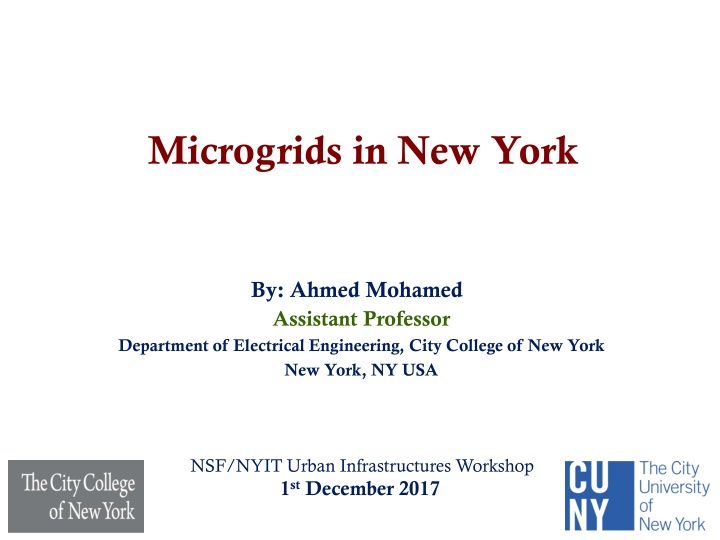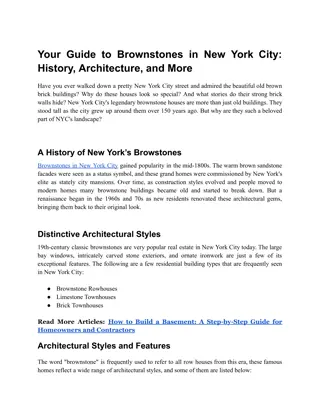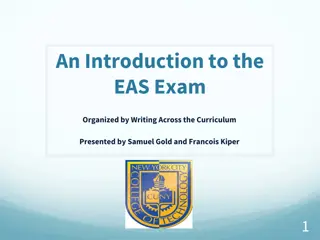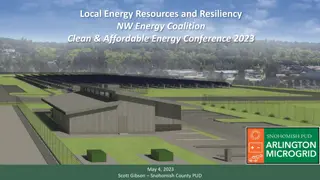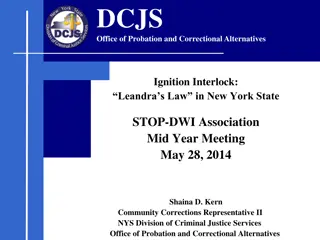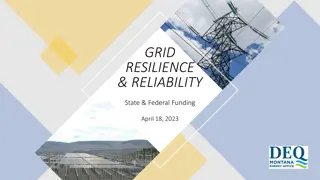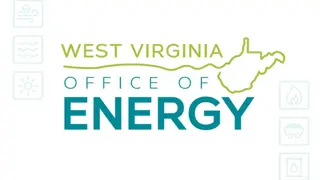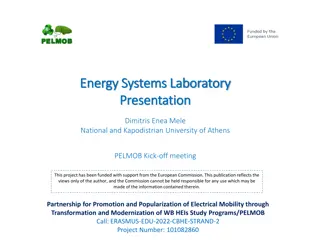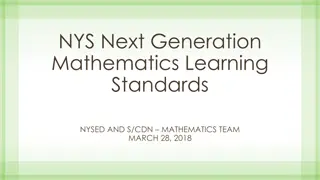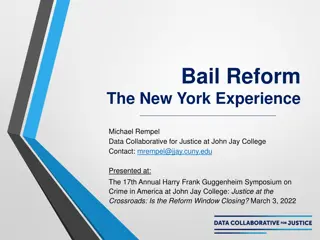Microgrids in New York
This content discusses microgrid-related efforts in New York State, ownership aspects, examples of NYC microgrids, selection criteria for geographic regions, and funding challenges for microgrid developers.
Download Presentation

Please find below an Image/Link to download the presentation.
The content on the website is provided AS IS for your information and personal use only. It may not be sold, licensed, or shared on other websites without obtaining consent from the author.If you encounter any issues during the download, it is possible that the publisher has removed the file from their server.
You are allowed to download the files provided on this website for personal or commercial use, subject to the condition that they are used lawfully. All files are the property of their respective owners.
The content on the website is provided AS IS for your information and personal use only. It may not be sold, licensed, or shared on other websites without obtaining consent from the author.
E N D
Presentation Transcript
Microgrids in New York NSF/NYIT Urban Infrastructures Workshop 1st December 2017 1
Objective To summarize some of the microgrid-related efforts within NYS The main sources include NYSERDA published reports and documents, e.g. NYSERDA RFP 3044 NY Prize Stage 2 Winners NYSERDA, Microgrids for Critical Facility Resiliency in New York State, Dec. 2014. 2 A. Mohamed (CUNY), Dec. 2017
Who currently owns microgrids? Typical microgrid owners and operators include: fixed military bases, university campuses, corporate research facilities, hospitals, airports, industrial plants, hotels, municipalities, shopping centers, and planned residential communities. The reason each of them invests in the components of a microgrid is that they find the cost of owning and maintaining it is lower than the cost of service interruptions. When CHP and thermal energy storage are included, complete microgrid assets can often be justified through energy savings alone. Reference: NYSERDA, Microgrids for Critical Facility Resiliency in New York State, Dec. 2014. 3 A. Mohamed (CUNY), Dec. 2017
Examples of NYC Microgrids Microgrids That Serve Single Entities: Cornell Microgrid and NYU-Washington Square Microgrid. Landlord/Tenant Microgrid: Eastman Business Park Microgrid. Independent Provider Microgrid: Burrstone Microgrid. New York leads the nation s effort to develop community microgrids through the NY Prize. 4 A. Mohamed (CUNY), Dec. 2017
Selection of Geographic Regions The most significant selection criterion was the number of critical infrastructure (CI) facilities in the nomination and the density of the CI at the site. A larger number of CI in close proximity to one another was considered optimal. Power outage data over a 24- month period that covered calendar years 2011 2012 were used. This period included outages caused by Superstorm Sandy, Hurricane Irene, Tropical Storm Lee, and the October 2011 snowstorm affecting the Hudson Valley and NYC. Analysis of this data indicated that 10 Counties and New York City had outages affecting over 5,000 customers lasting at least six days. Based on these criteria the Project Team solicited site nominations from NYC and 10 Counties: Broome, Dutchess, Nassau, Orange, Putnam, Rockland, Suffolk, Sullivan, Ulster, and Westchester 5 Reference: NYSERDA, Microgrids for Critical Facility Resiliency in New York State, Dec. 2014.
Funding Microgrids Microgrid developers may pay a risk premium for finance capital as there is limited microgrid performance data to inform potential investors. A microgrid developer s ability to secure long-term revenue streams is critical in assuring their investment. Some microgrid revenue streams cannot be captured by nonutility microgrid owners. For example, there are presently no mechanisms to compensate microgrid or distributed generator owners for distribution-level ancillary services and transmission and distribution investment deferral. A typical feasibility study for a potential microgrid project commonly exceeds $50,000 and takes approximately six months to complete. Reference: NYSERDA, Microgrids for Critical Facility Resiliency in New York State, Dec. 2014. 6
NY Prize NY Prize offers support for feasibility studies (Stage 1), audit-grade engineering design and business planning (Stage 2), and project build-out and operational microgrid (Stage 3). Applicants must include the local electric distribution company and more than one entity that will benefit from the microgrid. Lead respondents may include teams of universities, municipalities, counties, utilities, energy project developers or energy services companies, property owners, technology vendors, schools, emergency shelters, hospitals, and critical facilities. 7 A. Mohamed (CUNY), Dec. 2017
NY Prize Requirements Community microgrids eligible to receive NY Prize monetary awards must involve at least one facility that provides a critical service to the public (critical facility). Facilities meeting this requirement include: Wastewater Treatment Plants Hospitals Universities Facility of Refuge or Shelters Schools (K-12) Police Departments Libraries Hospitals Fire Stations 8 A. Mohamed (CUNY), Dec. 2017
Proposers The contest focused largely on microgrids that keep power flowing in a crisis to critical facilities like hospitals, emergency shelters, water treatment centers, and telecommunications systems. Many well-known companies in the microgrid space are teaming with the local communities to work on the projects, among them Anbaric, Burns Group, Booz Allen Hamilton, Eaton, IPERC, GE Energy, Green Energy Group, Landis & Gyr, NRG Energy, OBG, Power Analytics, Schneider Electric, Siemens, Spirae and Viridity Energy. The New York Power Authority (NYPA), Long Island Power Authority and utilites in the states also are participating in the teams, as well as organizations active in energy, such as Brookhaven National Laboratory, the Microgrid Institute, and the Pace Energy & Climate Center. 9 A. Mohamed (CUNY), Dec. 2017
Microgrid Sizing When operating in isolation, a microgrid no longer enjoys the benefits normally provided by the utility: diverse energy sources and the perception of an unlimited supply of power. Thus the microgrid operator needs to either install more generating capacity than the amount of power needed in any conceivable emergency, or the microgrid must perform load shedding during emergencies and turn off enough noncritical load that the remaining critical loads add up to less than the internal generating capability. 10 A. Mohamed (CUNY), Dec. 2017
Microgrid SizingExample Example: A microgrid with a load that varies between 10 MW during the day and 6 MW at night should include at least 10 MW of generating capability. If 3 MW of the peak load could be considered noncritical and could be shut-off indefinitely without constraining core operations, then only 7 MW of generating capacity would be required. This could be supplied by one 7 MW generator, or multiple smaller generators that could operate in parallel. N-1 or N-2 reliability are to be considered based on the negative consequences associated with failures. 11 A. Mohamed (CUNY), Dec. 2017
Opportunity Map 12 A. Mohamed (CUNY), Dec. 2017
Current State 83 feasibility studies have been completed. 11 Stage 2 projects are expected to conclude by mid-2018. Stage 2 winners: Empire State Plaza, University Heights, City Of Syracuse, Town Of Huntington, Rockville Centre, Village Of Freeport, East Bronx , Clarkson Avenue, Sunnyside Yard, City Of Binghamton, Buffalo-niagara Medical Campus. Common sources include CHP, energy storage and solar photovoltaic. 13 A. Mohamed (CUNY), Dec. 2017
Town of Huntington Huntington Village has suffered widespread power outages from storms in the last several years, including a power outage for more than eight days following Hurricane Sandy. The proposed community microgrid would be powered by a new fuel cell, energy storage, solar photovoltaics, and highly efficient combined heat and power (CHP) plants that use natural gas and biogas produced by the town s wastewater treatment plant to produce both electric and thermal energy to the microgrid customers. The near zero emissions of the fuel cell combined with the solar portion of this project will provide environmental benefits to the community. This mix of technologies would provide electricity and thermal energy to the town hall, Huntington Hospital, Huntington Wastewater Treatment Plant, Huntington YMCA, and Flanagan Senior Center, among others being evaluated. Partners: Town of Huntington, New York Power Authority (NYPA), TRC Energy Services, National Grid, and PSEG-LI. 14 A. Mohamed (CUNY), Dec. 2017
City of Binghamton At the confluence of two great rivers, the Susquehanna and the Chenango, the City of Binghamton has sustained more than its share of flood-related damages in both 2006 and 2011, much of the city was submerged. During these events, the city either lost or experienced diminished services of electricity, potable water, police and fire protection, as well as housing. The proposed microgrid will include combined heat and power, solar, and hydroelectric power. Power would be provided to Binghamton City Hall, Binghamton Police Department, Binghamton Fire Department, Binghamton Water Treatment Plant, YMCA of Broome, YWCA of Binghamton, Twin River Commons Student Housing Complex, Holiday Inn Arena, Bates Troy Laundry, Kradjian Properties, Keystone Associates Architects, Engineers and Surveyors, and NYSEG. Partners: GE Energy Consulting, Bridgestone Associates Limited, Keystone Associates Architects, Engineers and Surveyors, LLC, and NYSEG. 15 A. Mohamed (CUNY), Dec. 2017
Thank You URL: smartgrid.ccny.cuny.edu/wordpress Email: amohamed@ccny.cuny.edu A. Mohamed (CUNY), Dec. 2017 16
